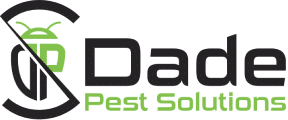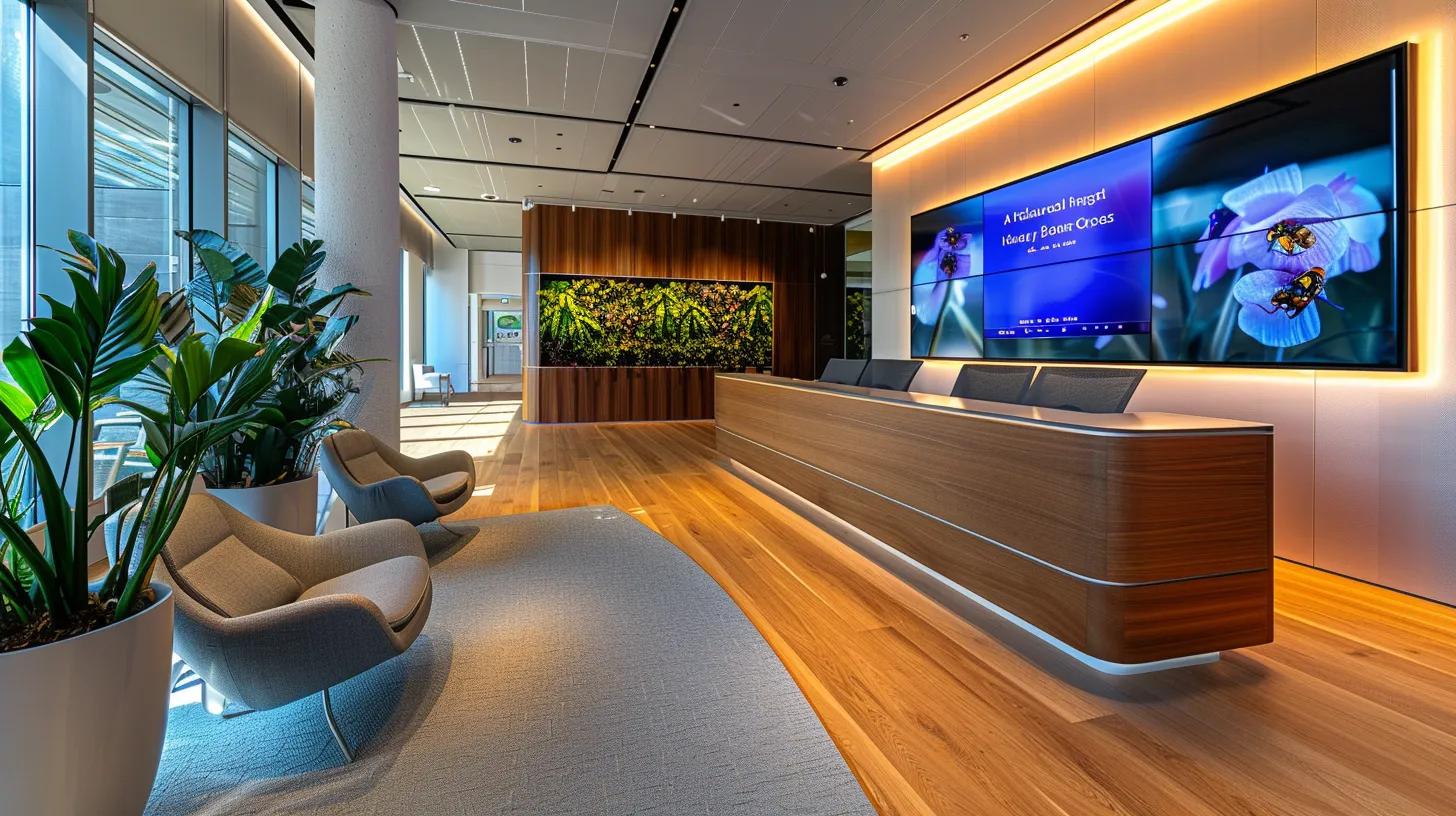Local Pest Control Services: Your Best Options Nearby
Introduction
Local pest control services are essential for maintaining safe, healthy, and comfortable environments in homes and businesses. Property owners often struggle with persistent pest issues that compromise hygiene, damage structures, and affect health. With an array of pest challenges—from termite infestations that can destroy wooden structures to rodents that carry diseases, as well as insects such as cockroaches, bed bugs, and ants—finding reliable, efficient, and affordable local pest control professionals becomes a top priority. In today’s market, these services not only tackle active infestations but also offer preventive maintenance and eco-friendly solutions to ensure pests do not return.
Local pest control companies provide tailored solutions based on a deep understanding of regional pest behavior, climate variations, and property-specific challenges. Their services include thorough pest inspections, treatment methods using chemical, biological, and integrated pest management approaches, and ongoing monitoring to prevent future infestations. Homeowners and business managers benefit from comprehensive support that minimizes property damage and promotes building longevity.
This article explores various aspects of local pest control services. It details the services offered, types of pests frequently treated, tips for choosing the best service provider, pricing structures, the impact of seasonal changes, frequently asked questions, and advice on finding trusted local providers. The following sections provide detailed insights with real-world examples and expert recommendations, helping property owners make informed decisions when selecting a pest control partner.
Transitioning from the introduction, the subsequent sections break down these topics into clear segments with comprehensive details and actionable advice.
Key Takeaways
- Local pest control services offer tailored inspections, treatments, and maintenance programs.
- Understanding common pest issues and treatment methods helps in selecting the right service provider.
- Transparency in pricing, local expertise, and eco-friendly practices are key factors in choosing a pest control company.
- Seasonal variations and preventive measures play a significant role in effective pest management.
What Are the Most Common Local Pest Control Services Offered?
Local pest control services offer solutions designed to eliminate infestations and prevent future problems. Services typically include comprehensive pest inspections, treatment plans tailored to the type and severity of the infestation, preventive measures, and follow-up maintenance. Providers use a combination of chemical, biological, and physical methods to address a wide range of pests—from termites and rodents to insects such as ants, cockroaches, bed bugs, and fleas.
How Does Pest Inspection Identify Infestations?
Pest inspections are the cornerstone of effective pest management. They involve a detailed examination of the property using visual assessments and specialized tools to detect hidden infestations. Inspectors look for signs such as droppings, nests, structural damage, and pest entry points. Advanced tools, including moisture meters and thermal imaging cameras, are often used to detect non-visible infestations. By identifying the location, extent, and type of pest activity early, professionals can devise a targeted treatment plan. This proactive approach prevents the escalation of the problem and reduces the potential for future infestations. Thorough inspections also help experts monitor environmental factors and advise property owners on necessary changes to reduce pest-friendly conditions.
What Treatment Methods Are Used for Different Pests?
Local pest control experts use a variety of treatment methods designed to target specific pest species while maintaining safety standards. Chemical treatments involve applying pesticides and insecticides at predetermined concentrations to eliminate pests. In some cases, professionals use baits, traps, and fumigation techniques to provide immediate relief and prevent recurrences. Biological treatments rely on natural predators or organic compounds that disrupt the pest’s life cycle without harmful side effects. For example, termite treatments may incorporate specialized chemicals that prevent colony expansion, while rodent control methods might utilize traps, baiting systems, and exclusion techniques. Integrated Pest Management (IPM) combines strategies like prevention, monitoring, and post-treatment evaluation to ensure a comprehensive approach.
How Can Pest Prevention Protect Your Home or Business?
Prevention is a critical component of effective pest control. By using pest prevention strategies, property owners can significantly reduce the risk of infestations. Preventive measures include sealing entry points, routine cleaning, and maintaining proper landscaping to eliminate pest habitats. Regular inspections help identify vulnerabilities early, allowing for timely corrective actions. Additionally, creating a barrier against pest intrusion—through perimeter sprays and sealing cracks—deters pests from establishing a foothold. Prevention minimizes immediate damages and reduces long-term maintenance costs by decreasing the frequency of invasive treatments. Homeowners who invest in pest prevention typically experience reduced stress, improved health, and a prolonged property lifespan.
What Does Ongoing Pest Control Maintenance Include?
Ongoing pest control maintenance involves scheduled follow-up visits, routine inspections, and periodic treatments to ensure that pests do not return. Maintenance plans may include seasonal check-ups, residual pesticide applications, and adjustments to treatment strategies based on environmental changes. Regular maintenance prolongs the benefits of initial treatments and ensures that any new infestations are quickly identified and treated. This proactive approach provides both peace of mind and effective long-term protection against pest invasions.
To summarize, local pest control services address a broad range of pest challenges through systematic inspections, targeted treatments, comprehensive prevention, and sustained maintenance efforts, ensuring that property owners have a robust defense against pest-related issues.
Which Pests Are Most Frequently Treated by Local Pest Control Experts?

Local pest control companies typically address the most persistent and damaging pest problems. Common pests include termites, rodents, ants, bed bugs, and cockroaches. These pests can cause structural damage, reduce indoor air quality, and pose health risks. Understanding the pest species helps in crafting a specific treatment and prevention plan customized to the property’s needs.
How to Identify Termite Infestations Early?
Termite infestations can be difficult to detect until significant damage occurs. Early identification is crucial. Signs include mud tubes along walls, hollow-sounding wood, frass (termite droppings), and visible swarmers near windows. Experienced inspectors look for these indicators using specialized equipment and sometimes laboratory testing of samples. Early detection not only pinpoints the extent of the infestation but also helps prevent severe structural damage. Routine inspections and monitoring are essential for properties in termite-prone regions, especially those made of wood or in humid climates. Identifying termite activity early allows for prompt treatment using barrier methods and chemical or baiting systems without significant disruption to occupants.
What Are Effective Rodent Removal Techniques?
Rodent control requires a multi-pronged approach that combines elimination and exclusion methods. Effective techniques include setting up traps, using rodenticides in controlled areas, and sealing all potential entry points. Additionally, sanitation plays a critical role; removing food remnants, securing waste, and keeping the environment clean reduce the attraction for rodents. Some companies use advanced monitoring systems to capture real-time data on rodent activity, ensuring a swift response when needed. Integrated rodent removal procedures not only eliminate the current infestation but also reduce the likelihood of re-invasion.
How to Get Rid of Ants and Prevent Their Return?
Ants are known for rapid reproduction and persistent trail systems. To eliminate them, professionals employ a combination of baiting and barrier sprays. Baiting involves using food-based attractants laced with insecticides to interfere with the colony’s communication and reproduction. Once weakened, barrier treatments around the building’s perimeter help prevent reinfestation. Additionally, experts stress the importance of removing attractants such as food spills and standing water that lure ants indoors. Regular reapplication of ant-specific products is critical to keep ant populations under control, especially during warmer months.
What Are Signs of Bed Bug and Cockroach Infestations?
Both bed bugs and cockroaches are notoriously difficult to eradicate. Bed bugs leave behind small reddish-brown spots on bedding, shed skins, and are often found in cracks and crevices near sleeping areas. Cockroaches are detected by their nocturnal activity, foul odor, and visible droppings. Regular inspections in areas such as kitchens, bathrooms, and bedrooms help identify infested zones early. Integrated pest management techniques, including targeted insecticides and physical removal, are often required to combat these pests. Early detection improves indoor air quality and minimizes health risks.
In summary, local pest control experts are adept at identifying and treating common pests. Through early detection, targeted treatment strategies, and ongoing preventive maintenance, these professionals help ensure that properties remain safe, pest-free, and comfortable.
How to Choose the Best Local Pest Control Service Near Me?
Selecting the right local pest control service is crucial for effective pest management. Buyers must consider factors such as local expertise, responsiveness, eco-friendly options, transparent pricing, and service guarantees. Evaluating these aspects helps ensure that the chosen pest control company meets both immediate needs and long-term protection goals. Local companies often have insights into regional pest behaviors and environmental conditions, which can provide a significant advantage over national brands.
Why Is Local Expertise Important in Pest Control?
Local expertise ensures that professionals are familiar with the specific environmental conditions and pest species in a given area. They understand regional climate impacts, seasonal pest patterns, and unique structural vulnerabilities. This knowledge allows them to design more effective inspection, treatment, and prevention plans. For example, providers experienced in tropical or humid climates can recommend specialized treatments for termites that differ from those used in drier regions. Homeowners and businesses benefit from tailored solutions that address the root causes of infestations, rather than just the symptoms. Local experts also offer valuable advice on property modifications to reduce pest attraction and ensure compliance with local regulations.
How Do Rapid Response and Emergency Services Work?
In pest control, time is critical. Rapid response and emergency services are essential when sudden infestations threaten damage or health risks. Providers with robust rapid response systems can send skilled technicians promptly to assess and treat situations. These services typically include after-hours availability, which is vital for issues arising outside normal operating hours. Quick responses help prevent the spread of pests and reduce overall repair costs, providing significant peace of mind for property owners.
What Are the Benefits of Eco-Friendly Pest Control Options?
Eco-friendly pest control methods minimize environmental impact while effectively eradicating pests. These treatments often use natural or organic compounds that are less harmful to humans, pets, and beneficial insects. Benefits include reduced chemical residues and minimized ecosystem disruption. Additionally, eco-friendly treatments can help lower the chance of pests developing resistance over time. Such sustainable practices align with growing consumer demand for green services while often providing cost-effective, long-term solutions.
How Does Transparent Pricing and Service Guarantees Affect Choice?
Transparent pricing and robust service guarantees are critical when evaluating pest control companies. Customers should expect clear, upfront pricing that outlines all costs, including additional fees for follow-up visits or emergencies. Transparent pricing builds trust, while service guarantees—such as warranties on treatment effectiveness and free follow-up visits if pests reappear—demonstrate a company’s confidence and commitment to customer satisfaction. These factors can significantly influence a property owner’s decision when choosing a pest management partner.
Ultimately, choosing the best local pest control service involves evaluating local expertise, response time, eco-friendly practices, and honest pricing to ensure effective, long-term pest control outcomes.
What Are the Typical Costs and Pricing Structures for Local Pest Control?

Understanding the cost and pricing structure for local pest control services is critical for budgeting and planning. Various factors influence costs, including the type of pest, severity of the infestation, property size, and geographical region. Service plans may differ between one-time treatments and ongoing maintenance contracts. Transparent pricing policies, often provided in written estimates, help customers compare providers and select a service that meets their needs and budgets.
How Much Does Termite Control Usually Cost?
Termite control is one of the most expensive pest management services due to the extensive treatment required. Costs vary widely depending on property size, termite activity level, and treatment method. On average, termite treatment can range from a few hundred to several thousand dollars. Advanced options such as bait systems, liquid barrier treatments, or fumigation are typically at the higher end. In addition to initial treatment, ongoing monitoring and maintenance may incur extra costs, although many companies offer package deals that include follow-up inspections. Transparent cost structures empower property owners to make informed decisions without billing surprises.
What Factors Influence Rodent Removal Pricing?
Rodent removal costs depend on factors such as the complexity of the infestation, property size, and specific methods used by the provider. Factors like accessibility, the rodent species, and the extent of structural damage can affect pricing. Often, rodent control involves both elimination and ongoing exclusion measures to prevent re-entry. Some companies charge per visit, while others offer continuous service plans with regular inspections and emergency responses. Environmental factors including weather and regional challenges may also play a role in the final cost.
Are There Affordable Pest Control Plans for Residential and Commercial Properties?
Many pest control providers offer a range of affordable plans tailored to both residential and commercial customers. Residential plans often include seasonal treatments, bi-annual inspections, and preventive measures designed to keep pests at bay year-round. Commercial plans are usually more comprehensive due to the scale and complexity of pest challenges in business environments, sometimes including monthly or quarterly visits and a focus on integrated pest management. Customizable service packages allow property owners to select necessary services, ensuring that costs remain within budget while still providing effective control. Transparent pricing, clear service agreements, and guarantees further ensure high-quality service without unexpected expenses.
Below is a table summarizing different pricing structures and factors that influence cost:
This table provides a helpful snapshot of various factors and cost ranges associated with pest control services, assisting property owners in negotiating fair pricing and selecting quality providers.
In conclusion, pest control service costs vary significantly depending on pest issues and service needs. Evaluating pricing structures while considering treatment effectiveness, warranty offers, and customer reviews can lead to more informed, cost-effective decisions.
How Does Seasonal Pest Control Affect Local Pest Management?
Seasonal pest control plays a vital role in managing pest activity throughout the year. Various pests have peak activity during specific seasons, and local providers adapt their strategies accordingly. Seasonal pest control involves targeted treatments during times of high pest activity and preventive measures during off-peak seasons to keep infestations at bay. By anticipating seasonal trends, providers can schedule treatments that address current infestations and fortify properties against future outbreaks.
Which Pests Are Most Active in Summer and How to Control Them?
During the summer, warm temperatures and increased humidity create ideal conditions for many pests. Insects such as mosquitoes, ants, and cockroaches become particularly active as high temperatures accelerate their breeding cycles. Effective summer control strategies include the use of residual insecticides, attractive baits, and physical barriers around entry points. Preventive measures include the removal of standing water, clearing debris, and routine inspections to ensure that nests or breeding sites are not established. Homeowners should consider additional treatments to tackle the unique challenges of summer.
What Pest Prevention Steps Are Recommended for Winter?
Even though pest activity usually declines during winter, some pests remain active or seek indoor shelter to escape cold temperatures. Rodents such as mice and rats, for example, may invade heated homes and businesses, while cockroaches and spiders may find refuge indoors. Pest control professionals recommend preventive measures such as sealing entry points, maintaining proper insulation, and scheduling mid-winter inspections to prevent infestations. Prevention efforts in winter focus on minimizing shelter and food sources that drive pests indoors, reducing the need for aggressive treatments later.
How Do Seasonal Promotions and Services Benefit Customers?
Local pest control companies commonly offer seasonal promotions and specialized service packages to attract new customers and retain existing ones. These promotions provide cost savings while addressing seasonal pest challenges. For instance, summer promotions may include discounted mosquito treatments or bundled services covering multiple insects, whereas winter packages might focus on rodent prevention and indoor maintenance. Seasonal promotions not only offer financial benefits but also encourage property owners to adopt a proactive approach to pest management. Such contracts often include follow-up inspections and additional treatment sessions during peak seasons.
A brief list summarizing seasonal benefits: – Summer: Reduces active pest populations and prevents breeding. – Winter: Minimizes indoor incursions from rodents and insects.
In summary, seasonal pest control strategies address the dynamic nature of pest activity throughout the year, helping property owners maintain a pest-free environment effectively and affordably.
What Are the Most Frequently Asked Questions About Local Pest Control Services?

Frequently asked questions (FAQs) address common concerns from homeowners and business operators. These FAQs clarify service schedules, treatment safety, preparation requirements, and overall effectiveness.
How Often Should I Schedule Pest Control Services?
Pest control frequency depends on factors such as the type of pests prevalent, severity of infestation, and seasonal variations. For residential properties, a bi-annual schedule is typically recommended, with extra treatments during high-risk periods like summer. Commercial properties may require more frequent visits, sometimes monthly or quarterly, to maintain a pest-free environment. Regular inspections are critical to detect early signs of infestations, ensuring effective, long-term management and lower overall costs.
What Are the Signs That I Need Professional Pest Control?
Indicators for professional pest control include the presence of droppings, nests, and chewed materials, which suggest ongoing pest activity. Unexplained structural damage, unusual odors, or pest-related debris are also red flags. Recurring issues despite do-it-yourself remedies and a decline in living conditions further underscore the need for expert intervention to comprehensively address the problem.
Can Pest Control Be Safe for Children and Pets?
Modern pest control methods are designed with safety in mind. Many reputable companies use eco-friendly, low-toxicity products and adhere to strict safety protocols to ensure minimal risk to children, pets, and the environment. It is important to communicate any concerns to the provider, who can adjust methods or offer specific preparation instructions.
How Do I Prepare My Home for a Pest Control Treatment?
Preparation is key to maximizing treatment effectiveness. Homeowners are advised to clean living areas, remove clutter, and secure food items. Specific instructions may include vacating the premises for a period, covering or removing personal belongings, and ensuring pets and children are safely relocated during treatment. Additionally, addressing structural vulnerabilities such as sealing cracks can improve treatment efficacy.
Overall, these FAQs help property owners understand when and how to engage professional pest control support.
Where Can I Find Trusted Local Pest Control Services in My Area?
Finding trusted local pest control services involves researching neighborhood providers, assessing reviews, verifying credentials, and understanding service coverage. Local companies often have a deep understanding of specific pest challenges in their region due to extensive experience in servicing nearby areas. Trusted providers typically showcase certifications, customer testimonials, and case studies of successful projects.
What Neighborhoods and Cities Are Covered by Local Providers?
Local pest control companies often serve a wide range of neighborhoods and cities within a metropolitan region or county. These providers usually list the neighborhoods they serve—including suburbs, rural areas, and urban centers—on their websites. This transparency helps prospective customers verify coverage using tools such as zip code locators, ensuring prompt and efficient service.
How to Verify Credentials and Reviews of Local Pest Control Companies?
Before selecting a pest control company, it is essential to verify credentials. Customers should check for proper licensing, insurance details, certifications from recognized industry organizations, and safety compliance. Online reviews, testimonials, and independent review platforms such as the Better Business Bureau provide insights into customer satisfaction and professional reliability.
What Are the Advantages of Choosing a Local Pest Control Company Over National Brands?
Local pest control companies offer several advantages over national brands. Their in-depth understanding of local pest challenges enables them to provide customized, timely treatment solutions. They are often more accessible in emergencies and capable of building long-term relationships with customers through personalized follow-up services and maintenance programs. Additionally, local providers tend to have competitive cost structures due to lower overhead expenses.
In conclusion, finding the right local pest control service requires diligent research and verification of credentials tailored to your area. Focusing on local expertise, transparent customer feedback, and comprehensive neighborhood coverage ensures the selection of a partner who provides high-quality treatment and reliable, long-term pest management.
Table: Comparison of Local Pest Control Service Features
Below is a table summarizing key features of local pest control services:
This table offers a clear snapshot of what to expect from local pest control services, helping customers compare options based on needs and budget.
Final Thoughts
Local pest control services are an indispensable investment for maintaining safe, efficient, and pest-free environments. Understanding the variety of services—from inspections to tailored treatments and preventive maintenance—helps property owners combat and prevent infestations effectively. Selecting a provider with local expertise, rapid response, eco-friendly practices, and transparent pricing is critical to achieving lasting results. As pest challenges evolve with seasonal changes and regional factors, partnering with a trusted local expert ensures that properties remain protected, healthy, and well-maintained.
Frequently Asked Questions
Q: How do I know if a pest control service is reputable? A: A reputable pest control service will be properly licensed, insured, and have verifiable certifications from industry organizations. Look for online reviews, testimonials, and government accreditation. Transparent pricing and service guarantees are also strong indicators of reliability.
Q: What should I expect during my first pest inspection? A: During the first inspection, a technician assesses both the interior and exterior of your property for signs of pest activity, including droppings, nests, damage, and entry points. Specialized techniques or equipment may be used, resulting in a detailed report outlining the extent of the infestation and recommended treatment methods.
Q: Are preventive pest control treatments safe to use around my family and pets? A: Yes, most modern pest control treatments are designed with safety in mind. Reputable companies use eco-friendly, low-toxicity products and follow strict safety protocols to minimize risks. It’s important to discuss any concerns with your provider so they can adjust methods or offer specific preparation instructions.
Q: How long does it typically take to see results after a treatment? A: Results can vary based on the type of pest, the severity of the infestation, and the treatment method used. In many cases, improvements are noticed within a few days, but some infestations may require multiple treatments over several weeks for complete eradication. Regular follow-up visits help sustain the results.
Q: Can I handle pest control on my own instead of hiring a professional? A: While minor pest issues may be managed with over-the-counter solutions, professional pest control services provide a comprehensive assessment and treatment that are generally more effective. Professionals use advanced tools and specialized products to thoroughly and safely address infestations.
Q: How do seasonal changes impact pest control needs? A: Seasonal changes greatly influence pest behavior. For example, summer often sees increased activity among insects like mosquitoes and ants due to favorable breeding conditions, while colder months may drive rodents indoors. Local pest control services adjust their treatment schedules and preventive measures accordingly.
Q: What if pests return after treatment? A: If pests return after treatment, reputable local pest control services typically offer follow-up visits free of charge or as part of their service guarantee. This follow-up is a critical part of integrated pest management, ensuring that any new activity is quickly identified and treated.

17 Years of Pest Control Experience Founder and Owner of Dade Pest Solutions Proud Resident of South Florida
Shaun Judy, a dedicated South Florida native, is the founder and driving force behind Dade Pest Solutions. With over 17 years of hands-on experience in the pest control industry, Shaun has built a reputation for reliability, results, and real local knowledge. His journey began with a deep commitment to protecting homes from pests using proven methods and innovative solutions. Raised with a strong work ethic and a passion for service, Shaun treats every property as if it were his own—delivering expert care with a personal touch.

